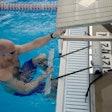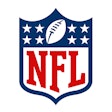![[Photo by Colleen Michaels, Shutterstock.com]](https://img.athleticbusiness.com/files/base/abmedia/all/image/2021/03/ab.safety1021_feat.png?auto=format%2Ccompress&q=70&w=400)
The COVID-19 pandemic led to major disruptions for sports venues. While some stadiums and arenas closed completely, others held competitions in the absence of fans. During the downtime, many operators were able to reassess their operations, allowing them to make changes — implementing contactless payment and ticketing systems, investing in additional security equipment, rethinking cleaning and sanitizing procedures — that might have been tabled prior to the pandemic.
As vaccination rates increase and more venues welcome the return of fans, this might be the right time for a refresher on the importance of implementing effective fan screening procedures at sports venues. The Cybersecurity and Infrastructure Security Agency recently updated its Public Venue Security Screening Guide, which was first released in 2015. Here's a look at why the guide was updated, what's in it, and how it can be of value to operators looking to invite fans back to sports venues that are as safe as possible.
Evolving environment
Alaina Clark, assistant director for stakeholder engagement at CISA, says the impetus for the document was to provide venue operators with a thorough understanding of how to implement screening procedures at venues that hold large events. The recent update of the guide takes into account new screening best practices, emerging technologies and changing company guidelines. In this most recent revision, the agency wanted to update the title and scope, expanding beyond patrons to include employees, contractors, vendors and performers.
"As the nation's risk advisor, CISA works with partners to defend against today's threats and collaborate to build more secure and resilient infrastructure for the future," Clark says. "In particular, CISA is the Sector Risk Management Agency for the Commercial Facilities Sector, which includes such public venues as stadiums, arenas, hotels, casinos, shopping malls, office buildings and other places where large numbers of people gather."
Clark says the final document is a collaborative effort and includes input from CISA's private-sector partners.
"Through our partnership with the Commercial Facilities Sector Coordinating Council, CISA formed a collaborative working group with security directors and subject matter experts representing sports teams and leagues, outdoor events organizations and public assembly facilities," says Clark. "These experts all provided invaluable insight to make this document as practical, scalable and valuable as possible."
In its final form, the guide includes suggestions for training, a review of screening equipment, and advice on how to implement physical searches and identify prohibited items.
Space considerations
COVID-19 was at least part of the reason for the update, says Clark, noting that allowing for social distancing at large events has led to the need for more touchless screening procedures and technologies.
"Another consideration is the footprint for screening areas — how much space needs to be dedicated to both the line and the screening location itself to allow for appropriate distancing between patrons waiting to enter an event or facility," Clark says. "Of course, some venues may not be able to expand their screening areas as much as others can, which is why the Public Venue Security Screening Guide is intended to be scalable for venues of various sizes."
The purpose for establishing security screening procedures is to define the nature of prohibited, illegal and suspicious items, and to determine the screening procedures that may be used to control their entry into commercial venues.
According to CISA, screening procedures should:
• Outline how to conduct a proper security screening.
• Describe how to interact with individuals being screened.
• Define the criteria used to identify prohibited, illegal and suspicious items during the screening.
• Describe the procedures for handling and discarding items discovered and identified during the screening.
Clark notes that the security screening procedures in the guide are "options for consideration" and are neither definitive nor required by any regulation or legislation. Due to the wide variety of types, sizes and locations of public assembly venues and the events held at and within these sites, not all suggested procedures will be relevant or applicable.
CISA suggests that venue owners, operators and event organizers may choose to implement any or all options in the guide and should supplement them with additional resources, when available. CISA will not take any action against an entity or company that chooses not to implement these options for consideration.
Screening 101What is a security screening? What are the components of a secure screening program? Who is screened? Who conducts security screenings? |
This article originally appeared in the October 2021 issue of Athletic Business with the title "Government Agency Revises Patron Screening Suggestions." Athletic Business is a free magazine for professionals in the athletic, fitness and recreation industry. Click here to subscribe.





































